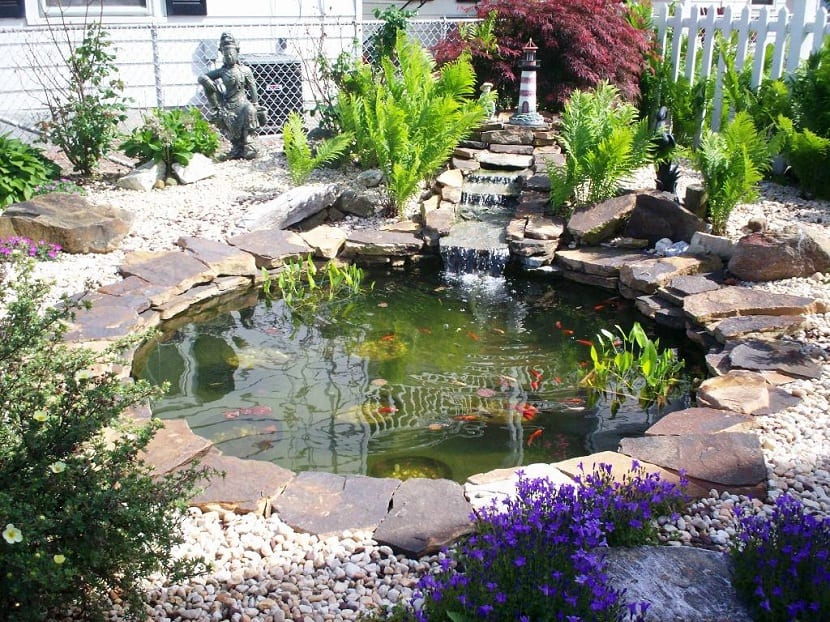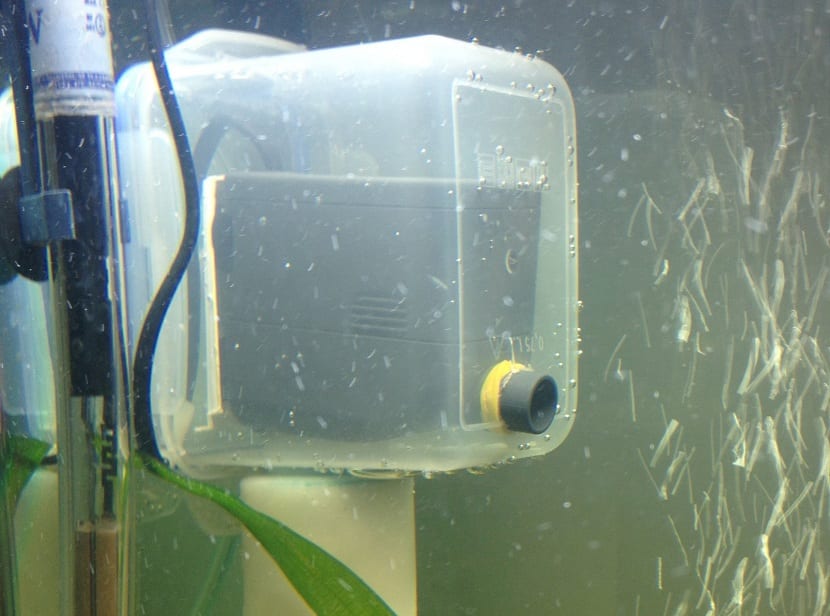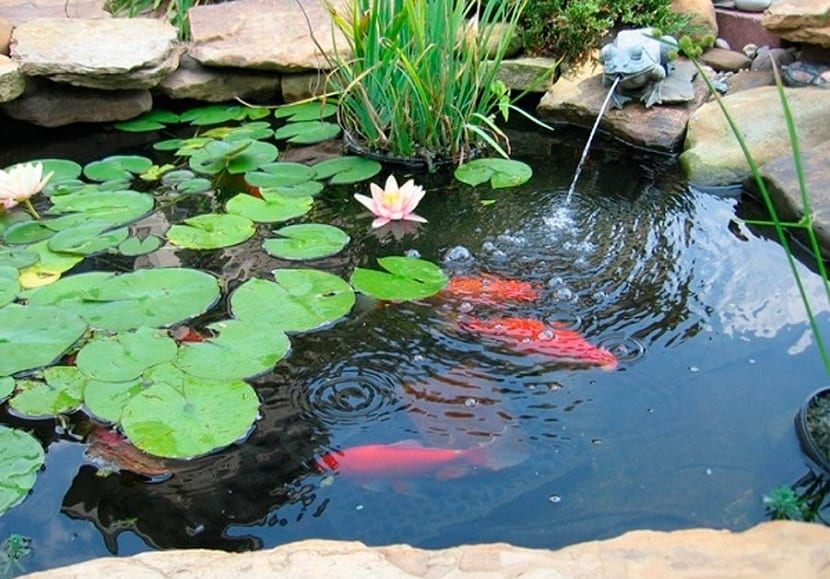
Do you like garden ponds? Your garden is the area of your home that can put you in contact with nature the most. It offers you a zone of comfort, stability, relaxation and peace. In addition, birds and other animals take advantage of the gardens to rest there or look for food.
To make your garden complete, a pond can be a great idea. A good garden has to have a balance between trees, shrubs, flowers, grass and water. Garden ponds are not easy to design, but still, here we are going to help you get your garden ready and decorate it to the fullest. Do you want to know what steps and what materials you need to build a pond in your garden?
Where to put the pond

The first thing we have to plan is the location of our pond. Preference should be given to those places that are more open and do not put them under deciduous trees, since its leaves will fall into the pond and it will be getting dirty continuously.
Once you have the idea of where you are going to place it, make a drawing where you organize the shape and size you want it to occupy, in order to know how much the pond will occupy throughout the garden. In the sketch that you make of your pond you must consider the area that it will occupy and the depth that it will have.
If in your pond, apart from aquatic plants, you want to have fish, you should consider that it has a large spacious space so that they can live well. As for the depth of the pond, This should be between 3 and 4 depths. This is done because at each depth level the water has a different temperature. In this way, depending on the season of the year in which we are, the fish will have more facility to adapt and regulate their body temperature.
Imagine that in winter the frosts begin and that, the deeper the pond water has, the less prone it is to freeze and the fish can shelter from the cold at the bottom.
Build the pond
Start digging

Once you have designed the shape, depth and morphology of your pond, start digging respecting the different depths of your sketch. When we finish digging we will add a perimeter ditch 50 cm wide and at least 4 cm deep.
Place the materials

Once we have dug our pond with the different heights, we will place a material that will be waterproof and resistant to water. This material consists of a coating with a special PVC lining for ponds.
To place this waterproofing material, we must first cover the pond with a thin layer of sand and place the material on top carefully and covering every part, including the trench.
Once we have placed this material, we will nail it to the ground and place stones to support it well and correctly delimit the entire perimeter.
Another option, although less original, is buy a ready-made base for a pond. They are usually made of PVC. Although the construction of the pond is much easier this way, we do not have the same design freedom, since they are already designed and we cannot modify it.
A third option is to use concrete but waterproof it with sika so that it does not have problems with water. First we will stone with the concrete, after it dries we will place what is the sika as a layer of paint with a thick brush to waterproof.
Pump and filter

Although it is a pond, we must prevent the water from stagnating and getting dirty, otherwise it could not harbor life. To do this, we must take into account that the water must meet certain characteristics and quality parameters.
A pump and filter will help us maintain a constant flow of water and it will clean it. The pump will be placed at the bottom of the pond and connect it to the filter, we must look at the brand of the pump because as in everything, there are always better ones. On the other hand, the filter will be placed outside the pond but close to it to be able to give maintenance, especially to let the clean water fall into the pond. The necessary electrical installation and the sanitary installation will be carried out, which is really not complicated.
Decor

Our pond is totally free to be modified at will and decorate it in the way that we like the most. The edges of the garden ponds must be covered by stones of ball type or river stones. In this way it will serve as a division between the pond and the rest of the garden.
Inside the pond we will place the aquatic plants at different depths according to their characteristics. There are species of deeper aquatic plants and others more superficial. Before placing them, we must inform ourselves well.
The same goes for fish. There are numerous species of fish that they don't get along with each other, since they are more territorial or the males fight each other, etc. For this reason, we must know well the species of fish that we are going to introduce into our pond, since, after all, they will have to live together.
Among the species of deep garden pond plants that we can select and that some of them will rise to the surface we have: Nimphaea alba blanca, Gladstoniana Nimphaea, Nimphaea odorata alba blanca, Chromatella Nimphaea, Gladstoniana Nimphaea yellow, Nimphaea atraction red and Nimphaea stellata red.
We can also place other types of less deep aquatic plants such as: Palustris caltha, Slternifolius Cyperus, Papyrus Cyperus, Equisetum arvense, Glyceria variegata, Pseudoachorus Iris, Juncus inflexus, Juncus maritimus, Pontederia lanceolata, Lacustris Schoenoplectus.
There are other types of plants that can be added such as floating plants and oxygenating plants that will be essential for the design of our pond. Among them are some such as the water hyacinth, the water lettuce, the water fern, etc.
Once we have decided which fish and which plants we are going to put in our pond, we fill it with water. We will give a few days of testing to see if the water flows correctly and does not stagnate. In addition, we will have to watch the pH levels of the pond so that they can live well in it.
With these steps you can have your pond your style and give a more natural touch to your garden. You only have to maintain and clean it when necessary and you can always enjoy your pond in good condition.
Do you like garden ponds? Tell us what yours is like.
I have a small family farm and I have wanted to build a fish pond for a long time, but I would like to do it in an "amateur" way so I need help with more specific details, where can I get that information? ... number of gallons, filters, pump, jets and Waterfalls, plants with more common names, lighting and shadows, depths and measurements, type of fish, quantity, feeding and treatment for the water, it is in the Caribbean, we do not have low temperatures ranging between 21 and 36 degrees approx. how to keep it working.
Good evening, I am starting to build a pond, I already have the pit made in an irregular shape of approx. 8,00 meters wide x 8.00 meters long and approx. 1,10/1,20 meters deep. I will cover it following your instructions, first putting sand all over the place and then putting some high density nylon/PVC material. My idea is to make a pond with aquatic plants and fish, so I will respect the suggestion of giving it different levels of depth. I will place a pump with a filter to aerate the water and keep it as healthy as possible. I live in Río Cuarto (Cordoba-Argentina), a place with quite hot summers (32 to 38°C) and cold winters (minimum of 0 and maximum of 10°C) where there are usually some days with frosts and temperatures below 0°C and exceptional snowfalls (rare). Could you help me define the different depths for these conditions? What would be the variety of aquatic plants that could adapt to the same type of fish, my idea was KOI carp, with some other species, I would appreciate it if you could tell me which one could be appropriate.
Regarding the PH of the water, which for this biosystem would be the indicated PH? The water that I have in the place is NOT from the mains, it is pumped and usually has a PH of 7 and something higher as well.
Finally and to prevent the different birds that abound in the area, it was my intention to place some mesh-type material, to prevent the birds from preying on the fish.
If it is possible to count on your advice, I will be very grateful.
Thank you very much.
greetings
Carlos D. Alici Biondi
Hi carlos.
I'm sorry, but when it comes to fish I can't help you hehe I recommend cold water fish, but I don't have much idea of species.
As far as aquatic plants are concerned, I can tell you that the following can work very well:
-Lily pads
-camalote or water hyacinth (this is invasive in some countries. Check with your trusted nursery if it can be grown in a pond)
-Small duckweed (Lemna minor)
-Fox tail or Ceratophyllum demersum
-Cyperus alternifolius (for the edge of the pond)
-Iris pseudacarus (for the border)
- Ponytail or Equisetum (for the edge)
Regards!